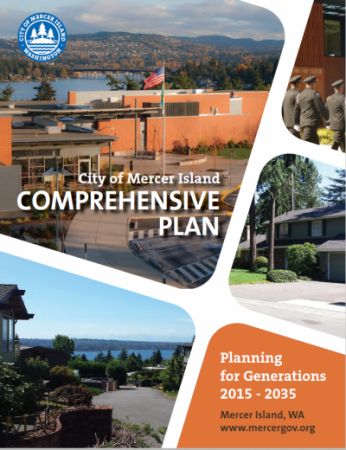Comprehensive Plan
The 2024-2044 Comprehensive Plan is a long-range planning document establishing goals and policies affecting changes to land uses, natural resource protection, and City facilities and services over the next twenty years. In addition to population, traffic, and development forecasts, the Comprehensive Plan includes an inventory and assessment of existing conditions on the island.
Current Comprehensive Plan
The City Council adopted the 2024 Comprehensive Plan update with Ordinance 24C-16 at its November 19, 2024 meeting. The Comprehensive Plan Chapters Include:
- Introduction (Vision Statement, Citizen Participation)
- Land Use Element (Existing Conditions & Trends, Growth Forecast, Land Use Issues, Land Use Policies, Action Plan)
- Housing Element (Accommodating Growth, Neighborhood Quality, Housing Supply, Housing Options, Implementation/Tracking)
- Transportation Element (Goals & Policies, Existing Conditions, Future Needs, Financial Analysis, Implementation Strategies)
- Utilities Element (Water Utility, Sewer Utility, Stormwater, Solid Waste, Electricity, Natural Gas, Telecommunications)
- Capital Facilities (Level of Service & Forecast of Future Needs, Financing, Goals & Policies, Financial Forecast, Process for Citing Essential Public Facilities)
- Shoreline Master Program Policies (Designated Environments, Goals & Policies, Shoreline Modifications, Specific Shoreline Uses and Activities)
- Economic Development (Goals and Policies for supporting economic growth)
- Parks and Open Space (Adopt the Parks, Recreation, and Open Space (PROS) Plan by reference)
WA State Growth Management Act (GMA)
The state's Growth Management Act (GMA) was enacted in 1990 in response to rapid population growth and concerns with suburban sprawl, environmental protection, quality of life, and related issues. The GMA governs a significant amount of the content in Mercer Island's Comp Plan.
Recent planning activities in Mercer Island have focused attention on the Washington State Growth Management Act (GMA) (RCW 36.70A.130). The Washington State Legislature adopted the GMA in 1990 to address uncoordinated and unplanned growth that posed a threat to the state’s high quality of life.
Citizens and lawmakers saw how population growth and suburban sprawl threatened Washington’s forest and agricultural lands, wetlands, and wildlife habitat. Traffic congestion, especially in Western Washington, clogged the highways and polluted the air. Clean drinking water sources were endangered by increasing pollution. Flooding and landslides were becoming frequent events, especially in areas of new development. Schools, sewers and water supplies were straining to keep up with growth. To address these concerns, the GMA requires Washington’s 39 counties and 281 cities and towns to do land use planning, including zoning the community to accommodate future population growth.
City planning staff update the Housing Development Dashboard each year to provide information on housing development trends in Mercer Island.

